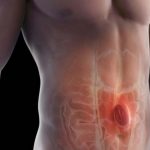Description
Hemorrhoids: occur due to excessive filling of the veins in the anal region. They usually develop after periods of constipation or diarrhea.
Anal fissure: wound provoked, normally, in periods of constipation. The fissure produces a sustained contraction of the anal sphincter, which prevents its healing.
Fistula and perianal abscess: due to an obstruction of the anal glands, an infection (perianal abscess) occurs.This infection looks for the zones of lower pressure to be able to leave and produces different paths (fistulas) with a chronic suppuration. The Crohn sometimes also produces complex fistula.
Symptom
Hemorrhoids: anal lumps, pain and anal bleeding (usually with bowel movements).
Anal fissure: very intense anal pain that increases with defecation and anal bleeding.
Perianal abscess: fever, lump in the area of the anus and rectum and pain.
Fistula: point near the anus where a continuous suppuration occurs.
Treatment
Depending on the severity, the treatment can be medical, with ointments that help healing and medications in the mildest cases, or surgical in the most serious cases or that have not remitted with medical treatment.
Surgeries in the perineal region are usually routine and most require at least one night of hospital stay to control the patient’s pain.
Hemorrhoids: removal of hemorrhoidal packs
Anal fissure: part of the anal sphincter (internal lateral sphincterotomy) is cut so that this relaxation allows the healing of the wound (fissure).
Perianal abscess: they usually intervene urgently and their treatment consists of surgical drainage (removal of pus and blood secretions)
Fistula: requires image tests to know the path and remove or open the fistula.


